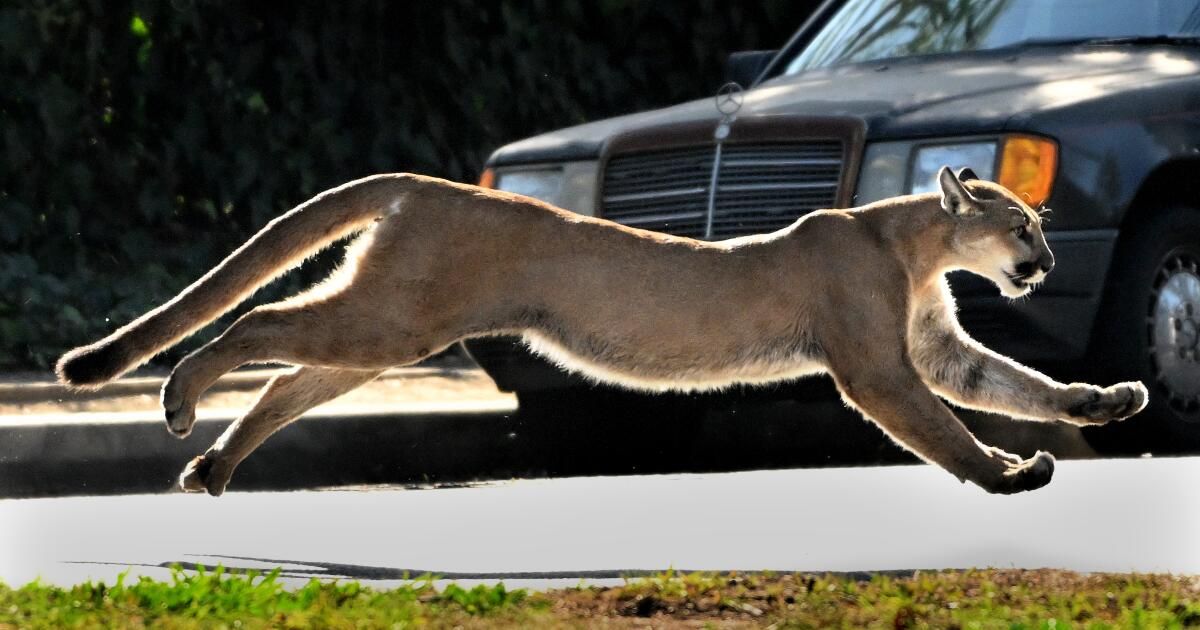Southern California is dangerous for mountain lions. In the last two weeks alone, three lions have died on the roads.
The much-loved cat known as “Uno” (because she only had one functional eye) who was wandering in the mountains of Orange County was hit by a vehicle near Santiago Canyon Road and died from her injuries. another female Mountain lion He was found dead on Las Virgenes Road in Calabasas. And most recently, a dead lion was found on the shoulder of Highway 60 near Diamond Bar.
How many big cats are there fighting to survive? Turns out, not as many as some experts thought.
An ambitious seven-year study by the California Mountain Lion Project has given us some depressing answers about the size of the state's mountain lion population. Previously, researchers estimated there were between 4,000 and 6,000 mountain lions. But that 1980s figure was a “backwards” estimate with limited data, according to Justin Dellinger, a top carnivore scientist who led the study. Using different models, the study came up with a more precise estimate of between 3,200 and 4,500.
The joint effort of researchers from California universities, the state Department of Fish and Wildlife, and nonprofit environmental and wildlife conservation organizations collared and observed mountain lions (and analyzed their scat) in 13 areas. throughout the state. It will be submitted to a scientific journal for peer review later this year. The study included lions in several Southern California mountain ranges, but not in the Santa Monica Mountains, where the National Park Service has been studying lions for two decades, due to the Woolsey Fire.
Scientists, including Dellinger, believe the next question is whether these existing populations are genetically healthy. Cougars may be top predators, but if they can't cross a road to find a mate and territory without risking their lives, they end up locked in one area and are forced to reproduce. This can result in unhealthy offspring and reduced fertility. Researchers in the Santa Monica Mountains have seen signs of inbreeding in the population they study. The worse it gets, the greater the risk that the lion population will fall into what scientists call an extinction vortex.
Dellinger says we still have time to avoid that fate by taking steps to protect the remaining mountain lions. Without intervention, the long-term viability of populations in the Santa Monica and Santa Ana mountain ranges “is virtually zero,” he said.
That is why we must stop the use of rodenticides, which can end up killing lions when they eat prey that has ingested rat poison. And it's also why we need more wildlife crossings to help mountain lions and other animals get to the other side of busy roads and highways. Not all crossings have to be as spectacular or expensive as the $87 million one being built on Highway 101 in Liberty Canyon. More modest overpasses, underpasses and fences along roads can also help.
The California Fish and Game Commission is expected to finally decide this year whether to list central and southern California lions as threatened or endangered species under state law. A listing could make efforts to protect mountain lion connectivity an even higher priority for the state. If we want California mountain lions to survive and thrive, they need all the extra protection they can get from us.












